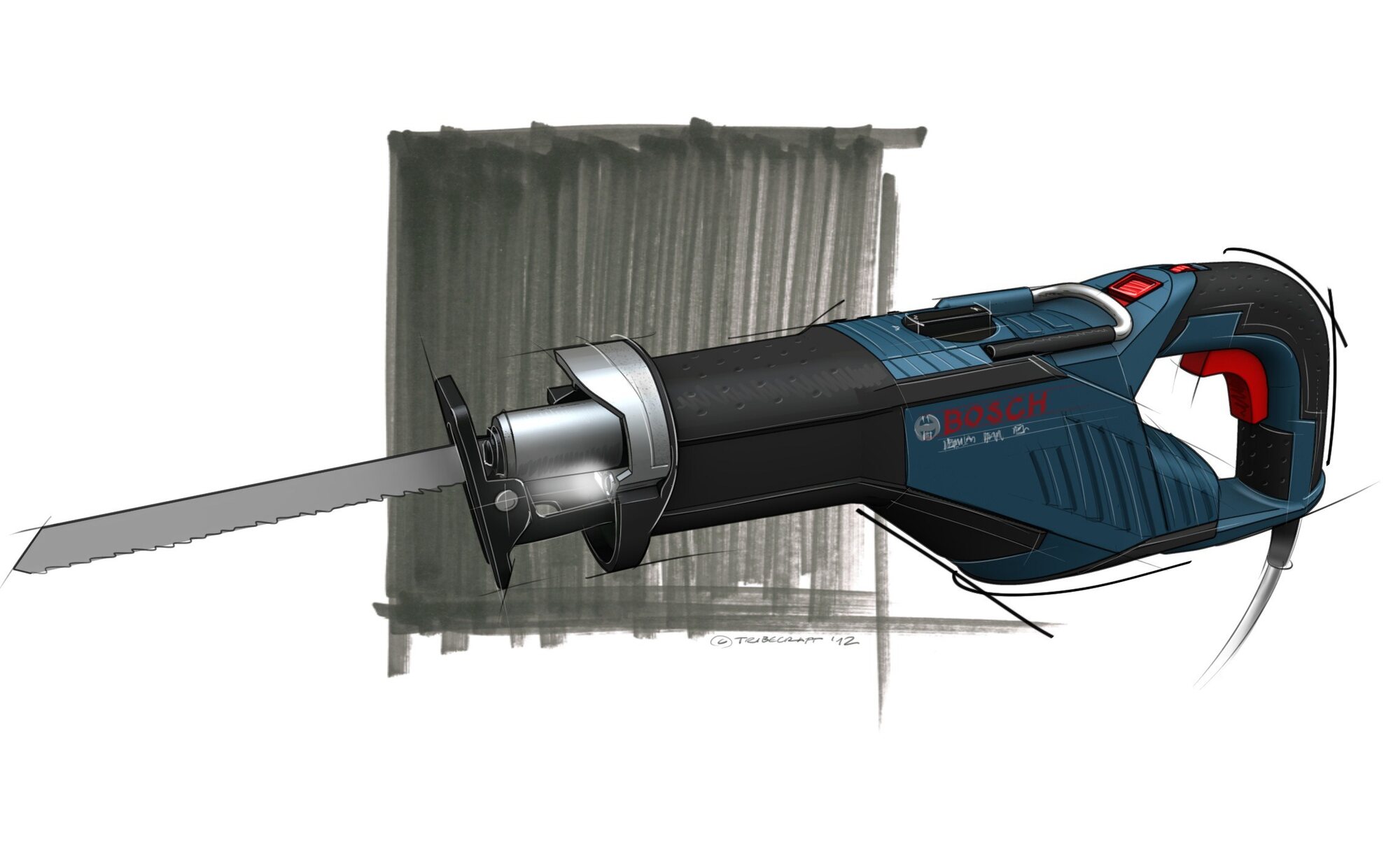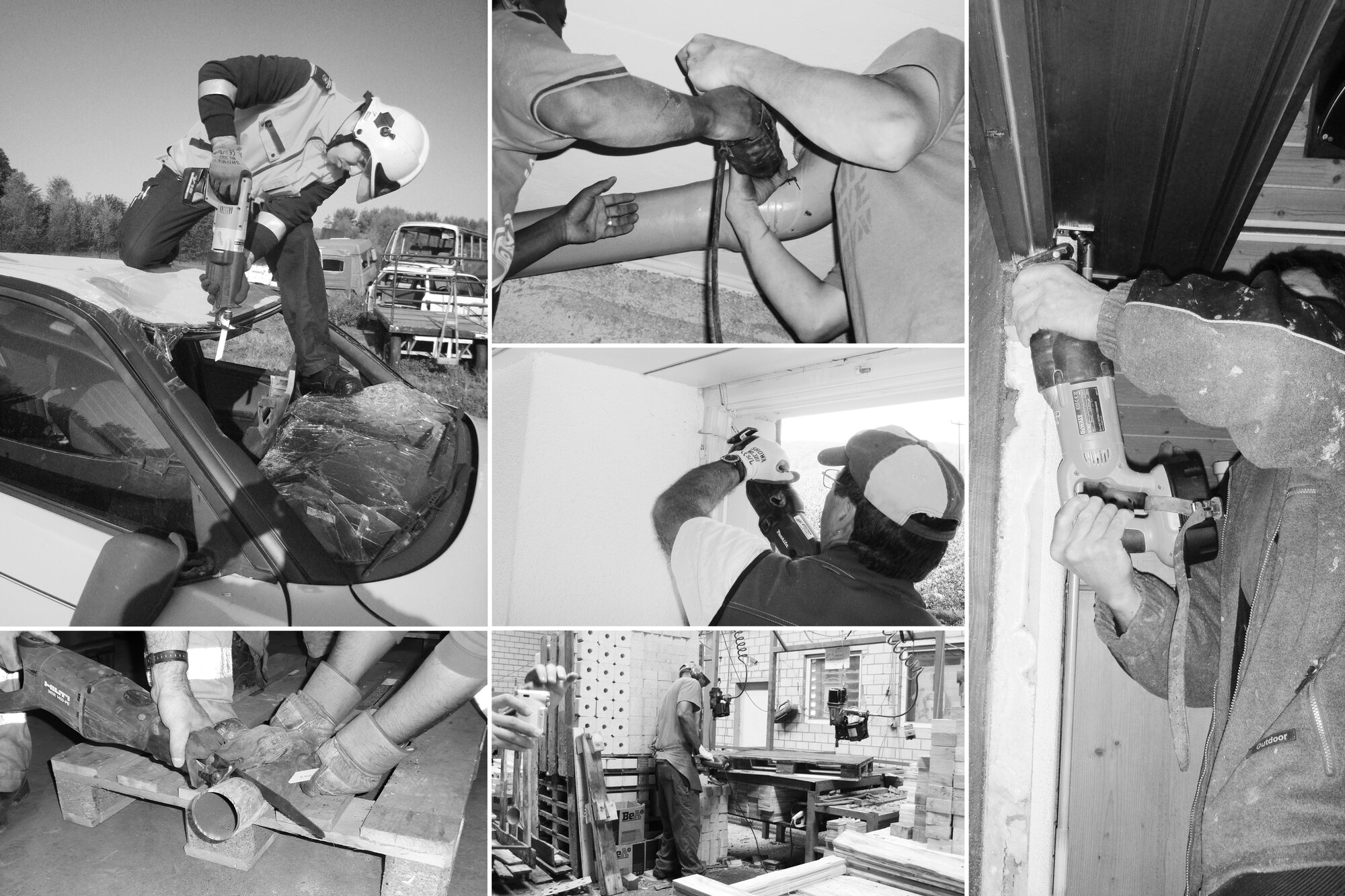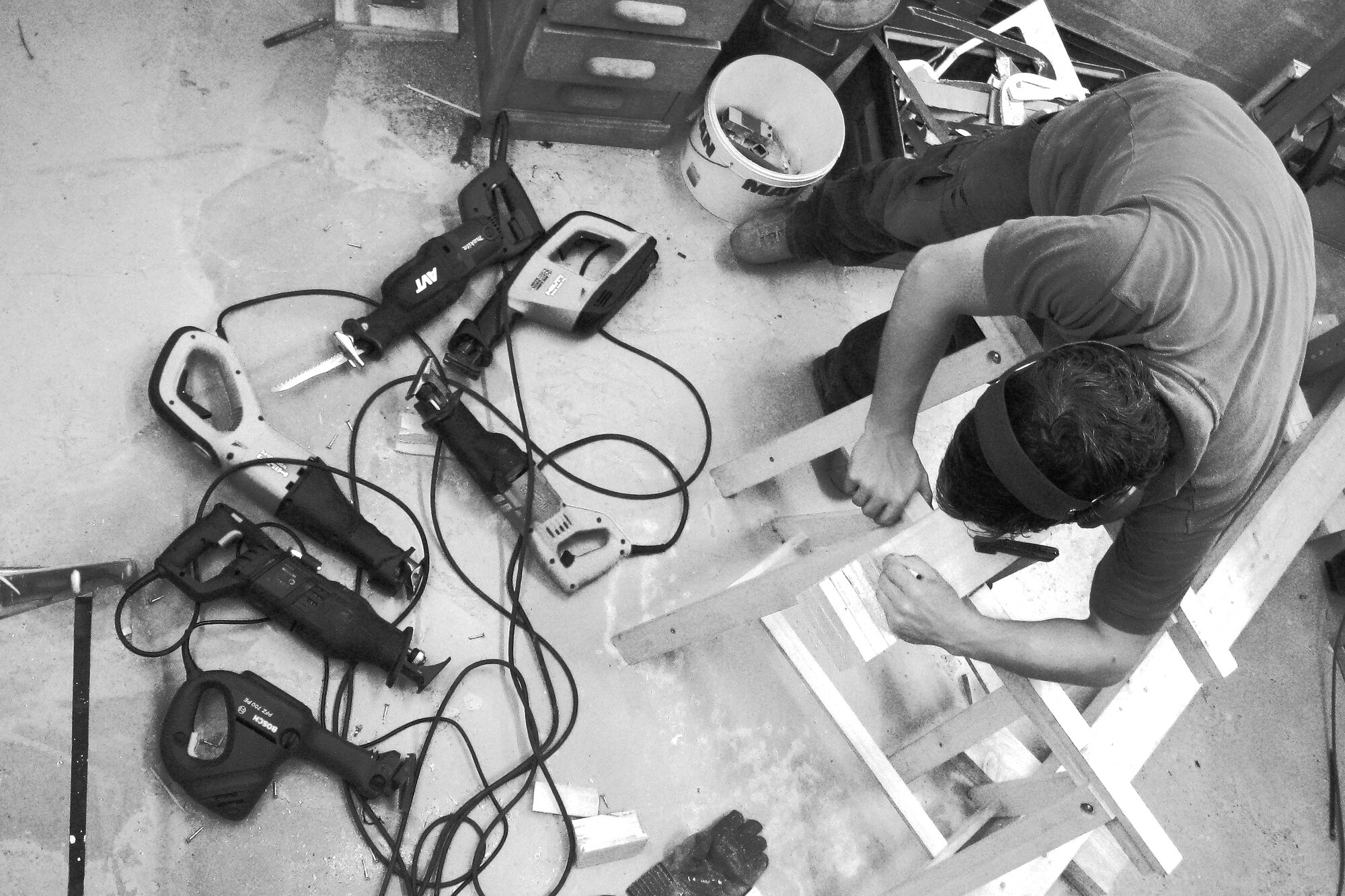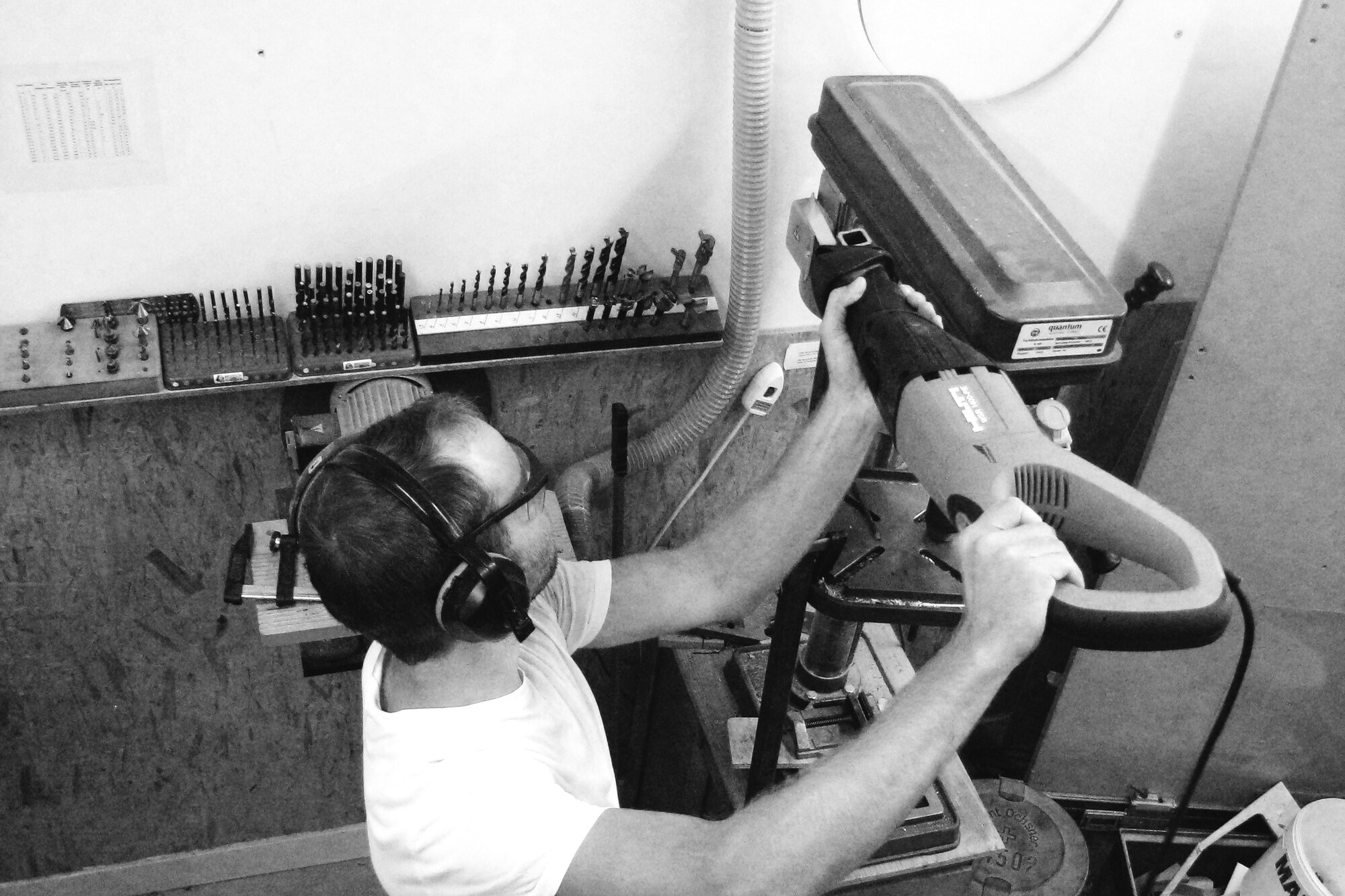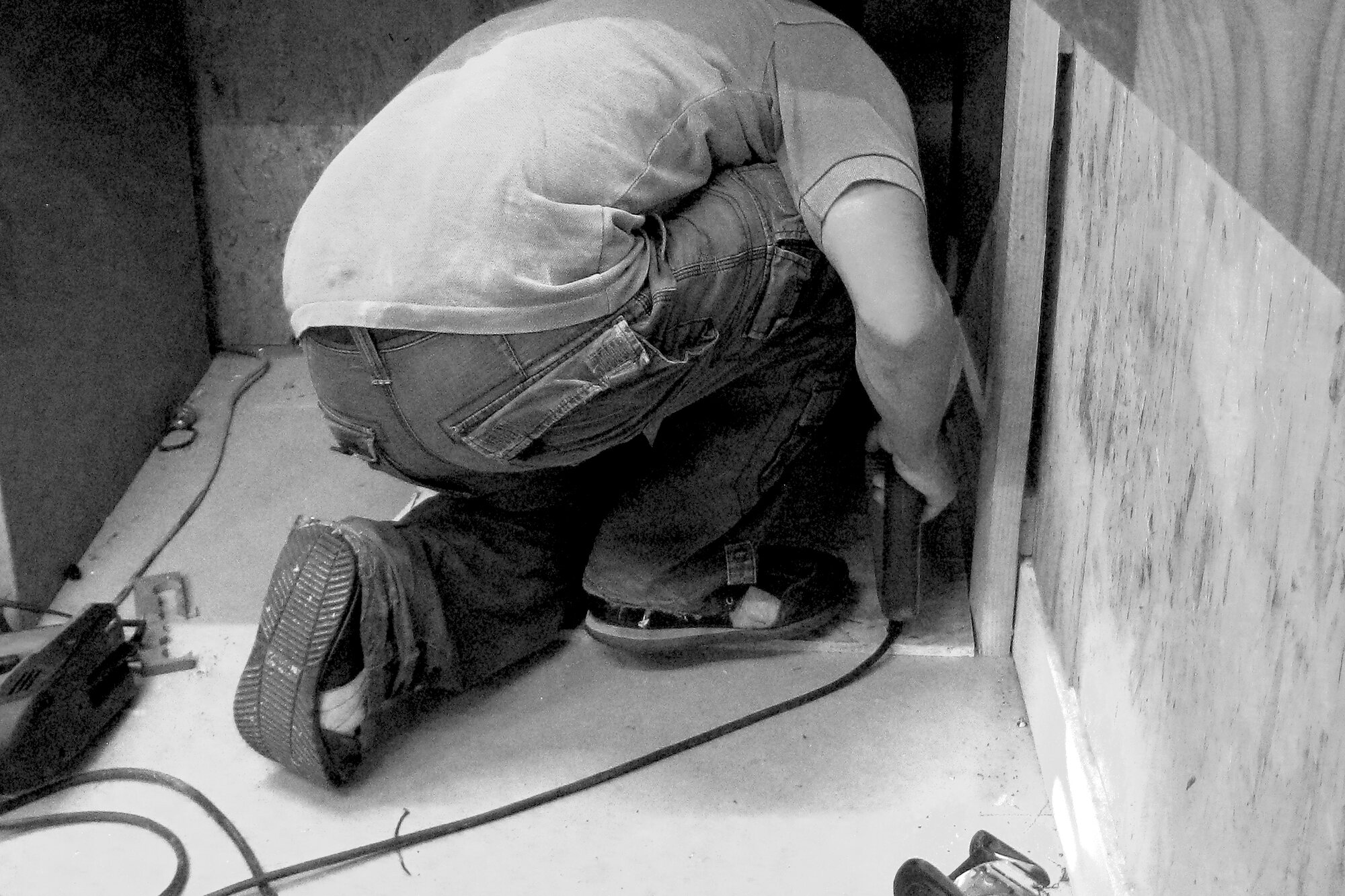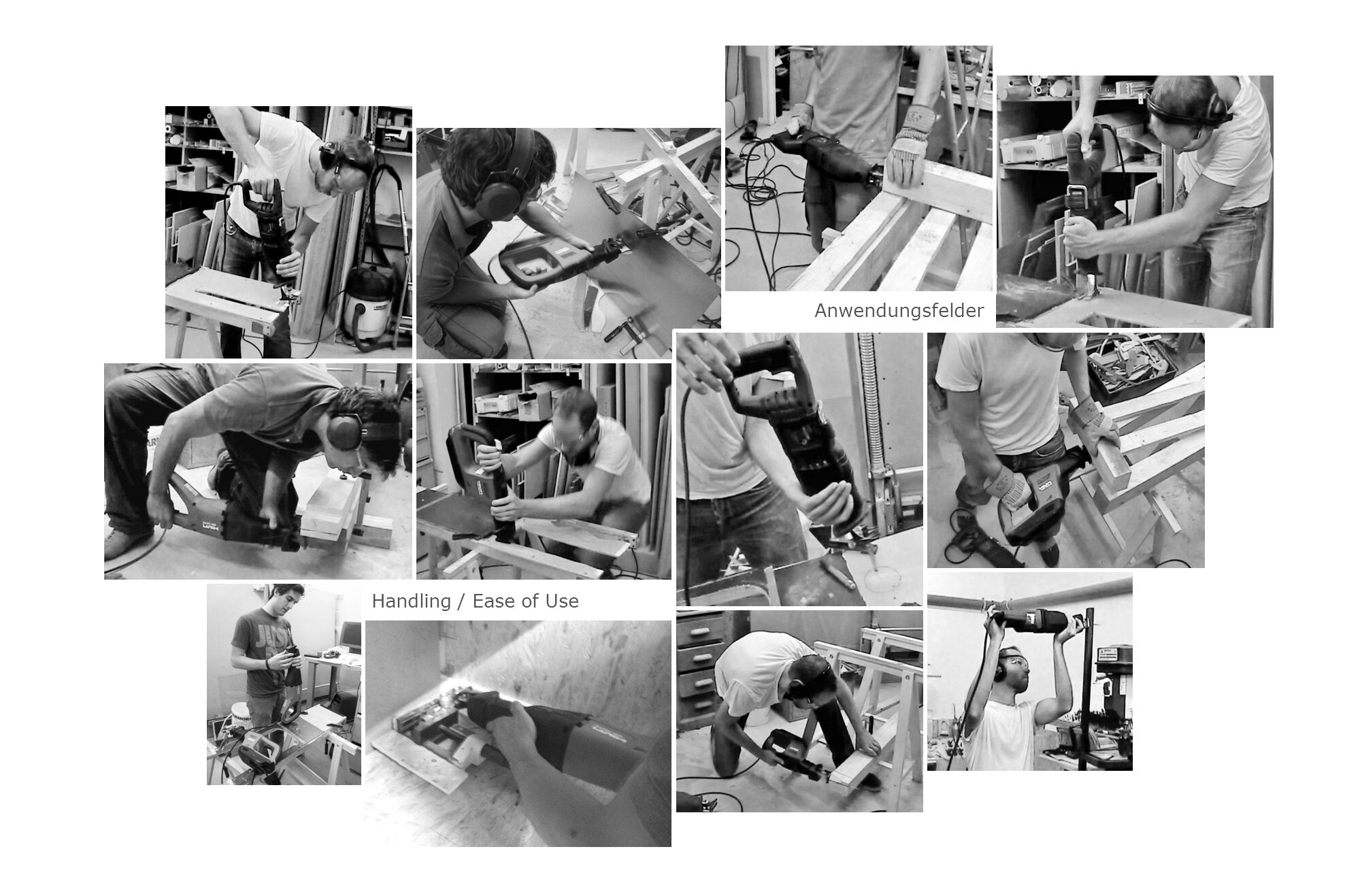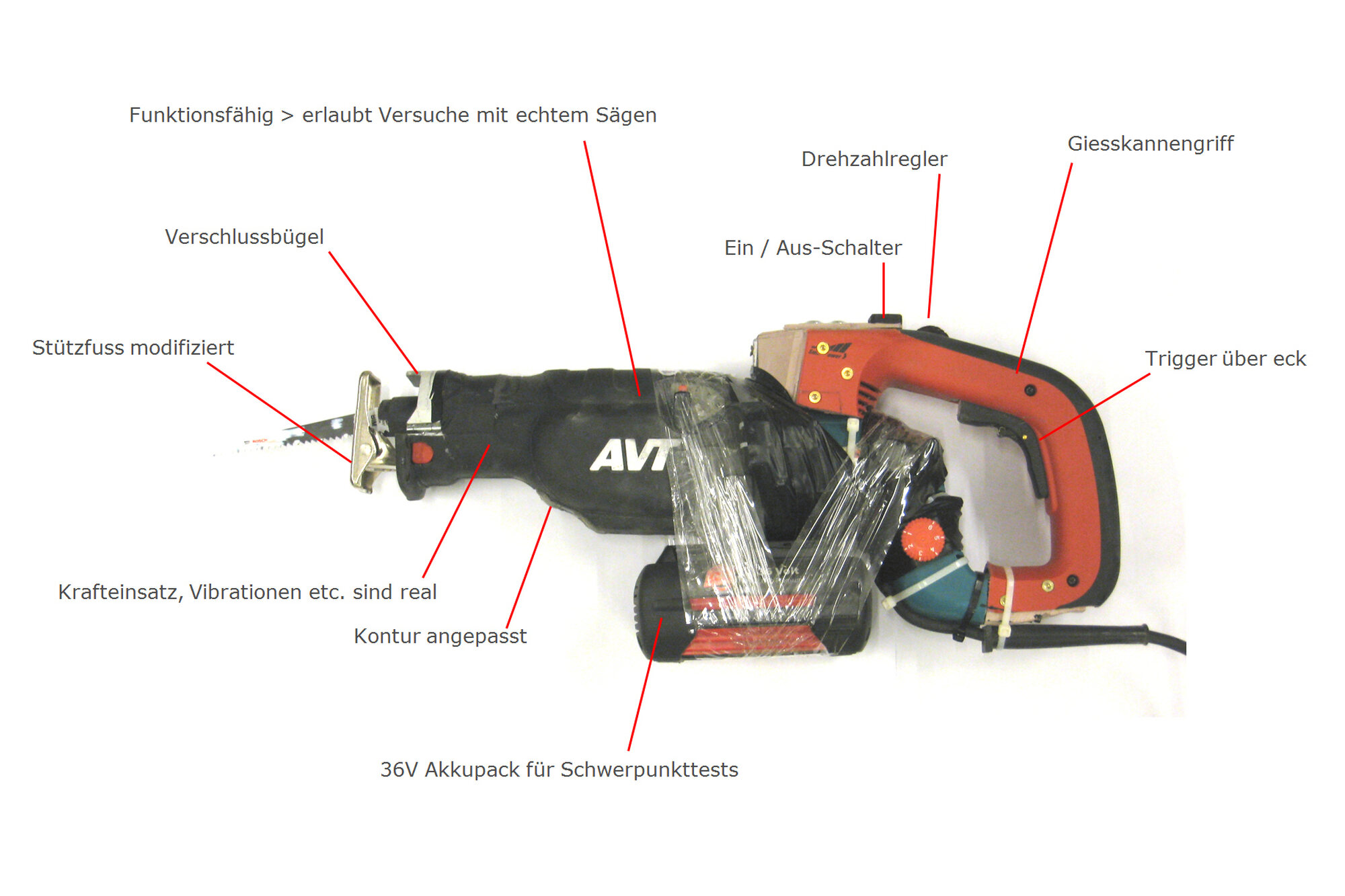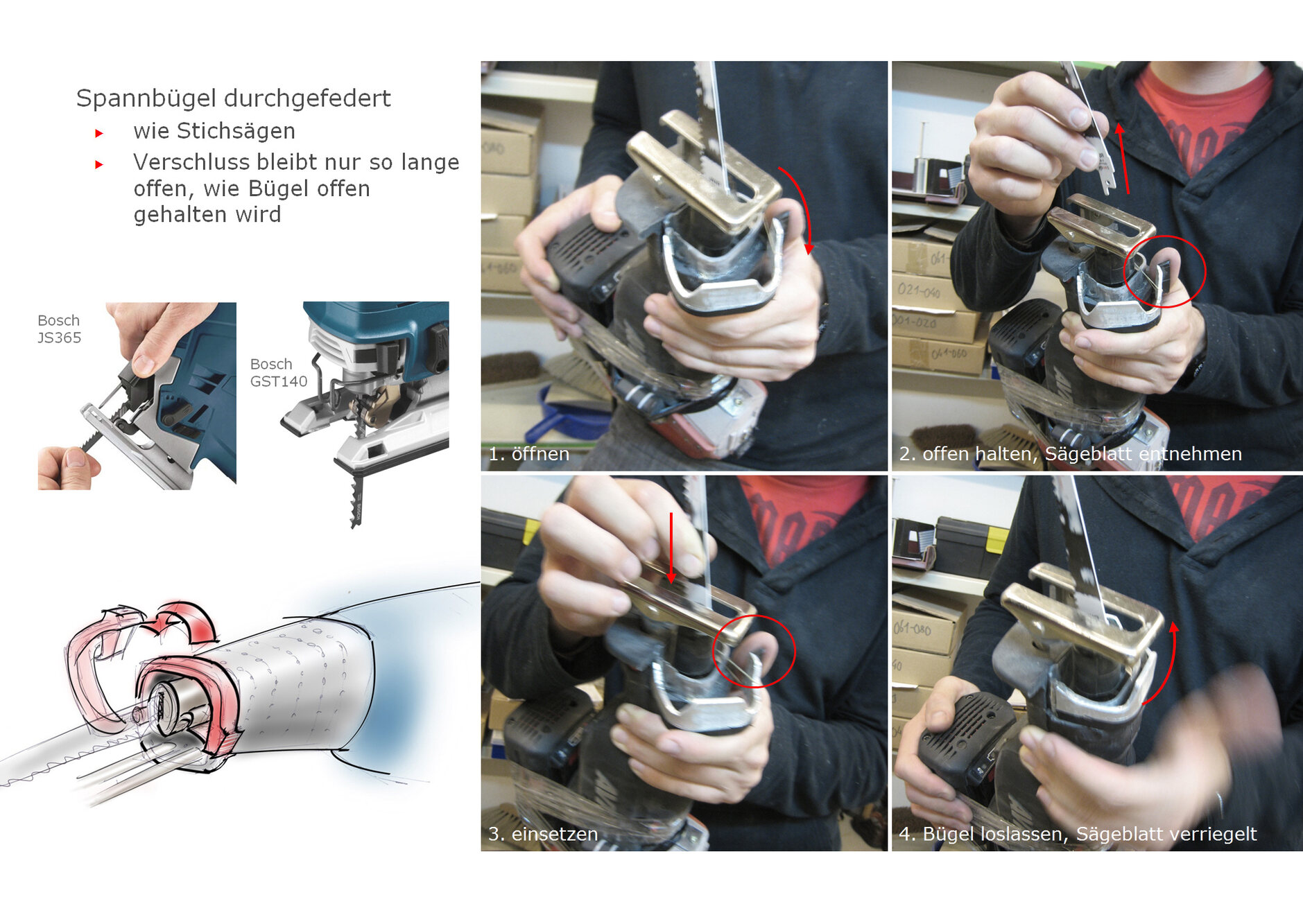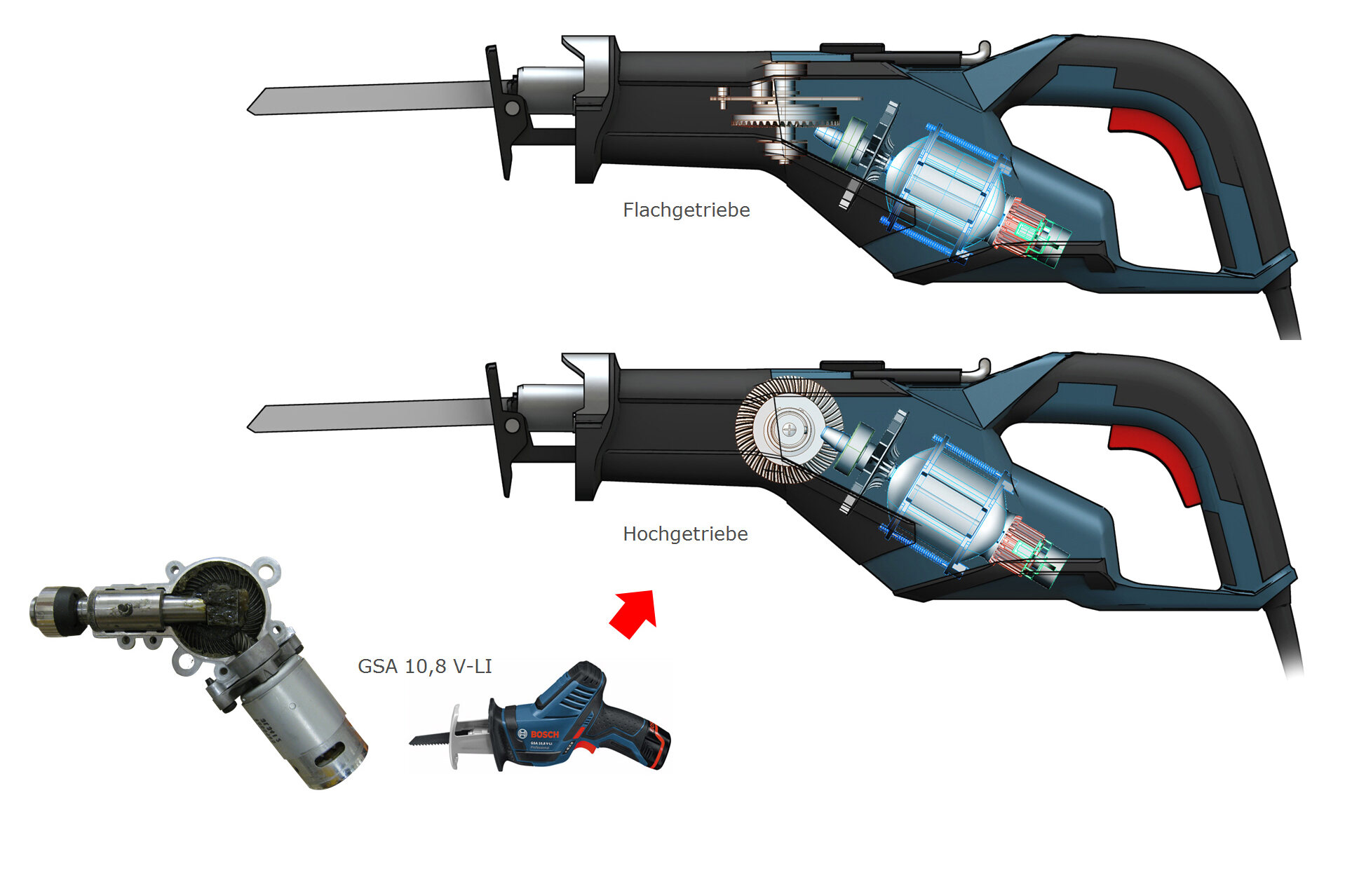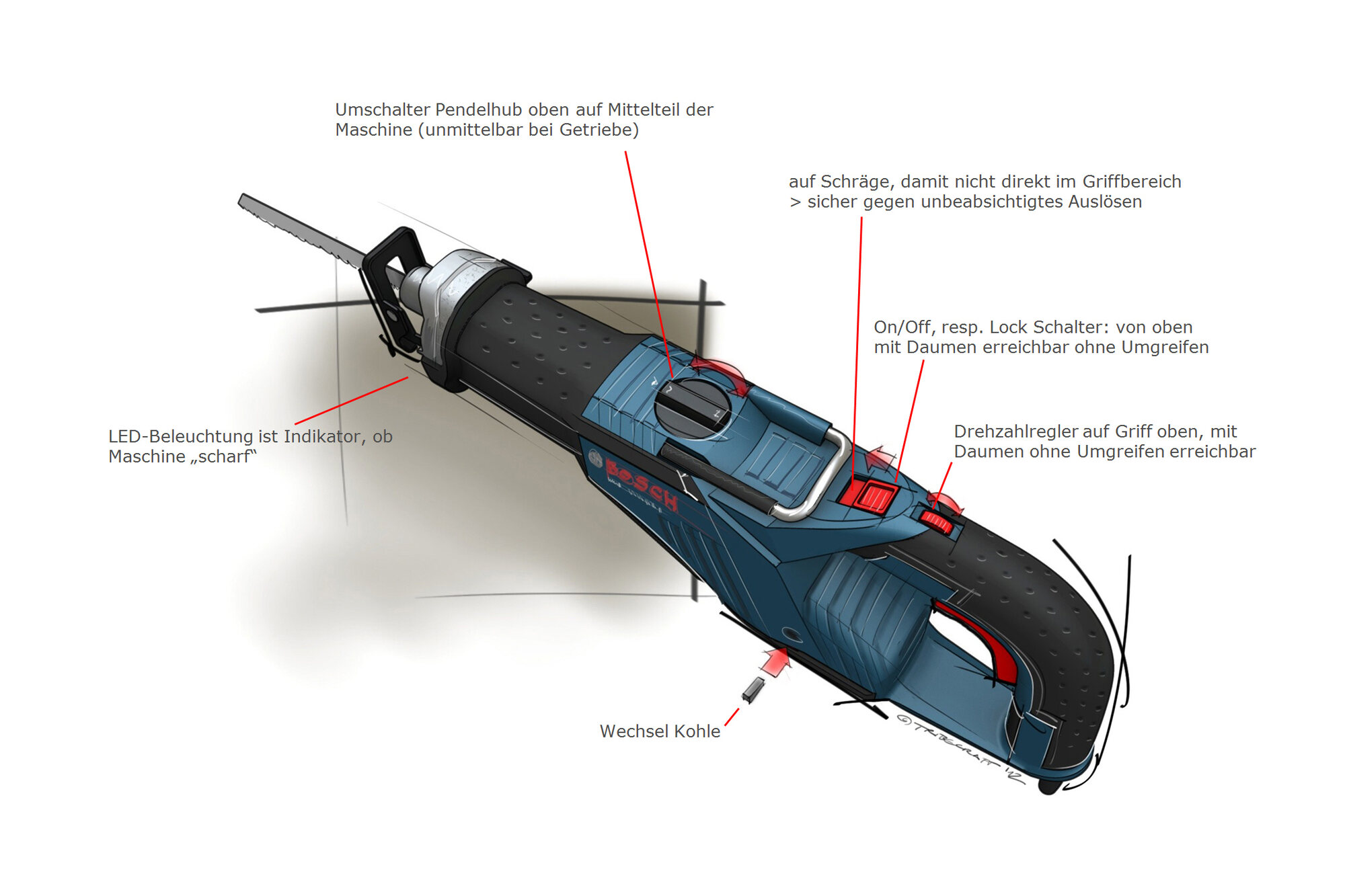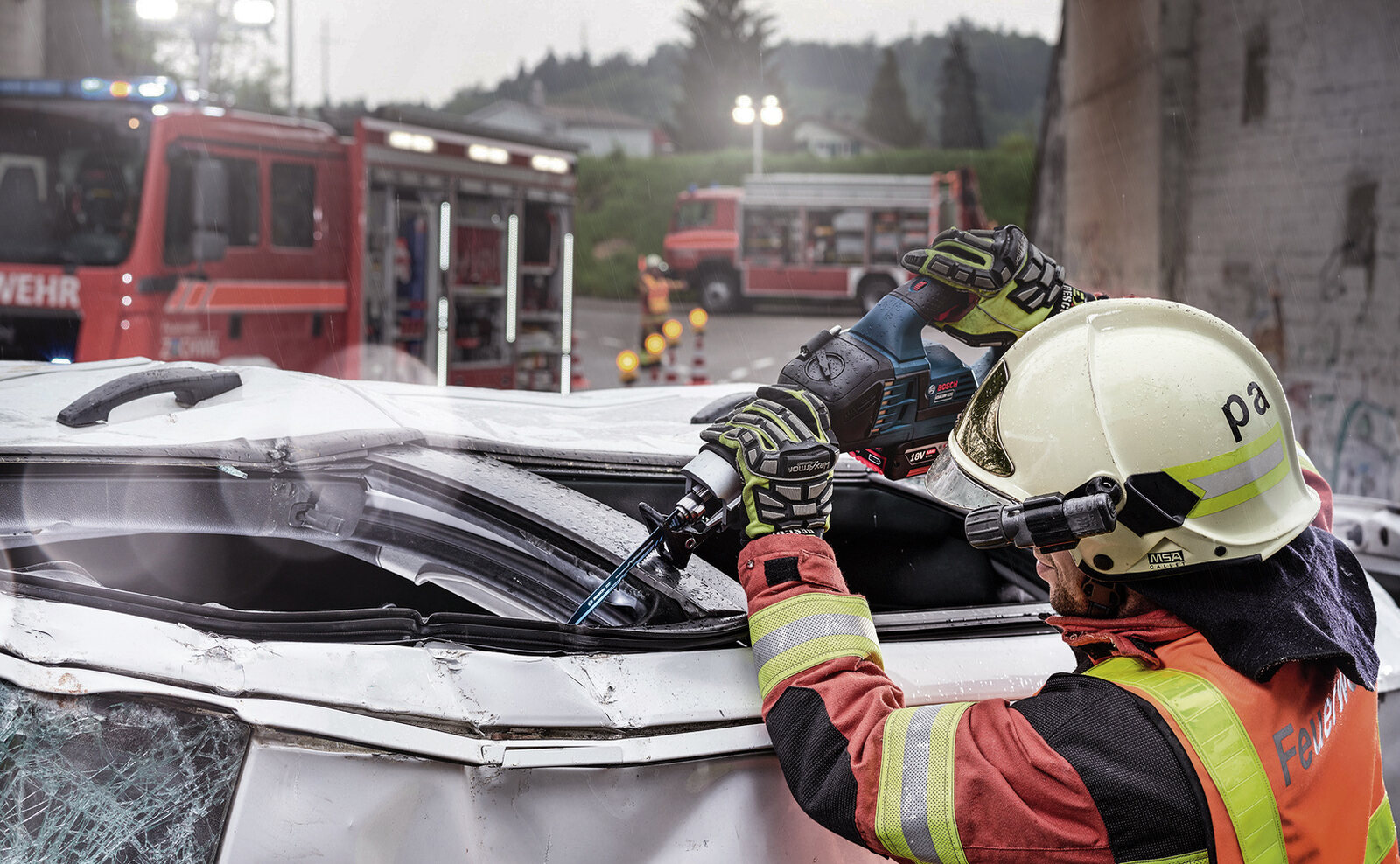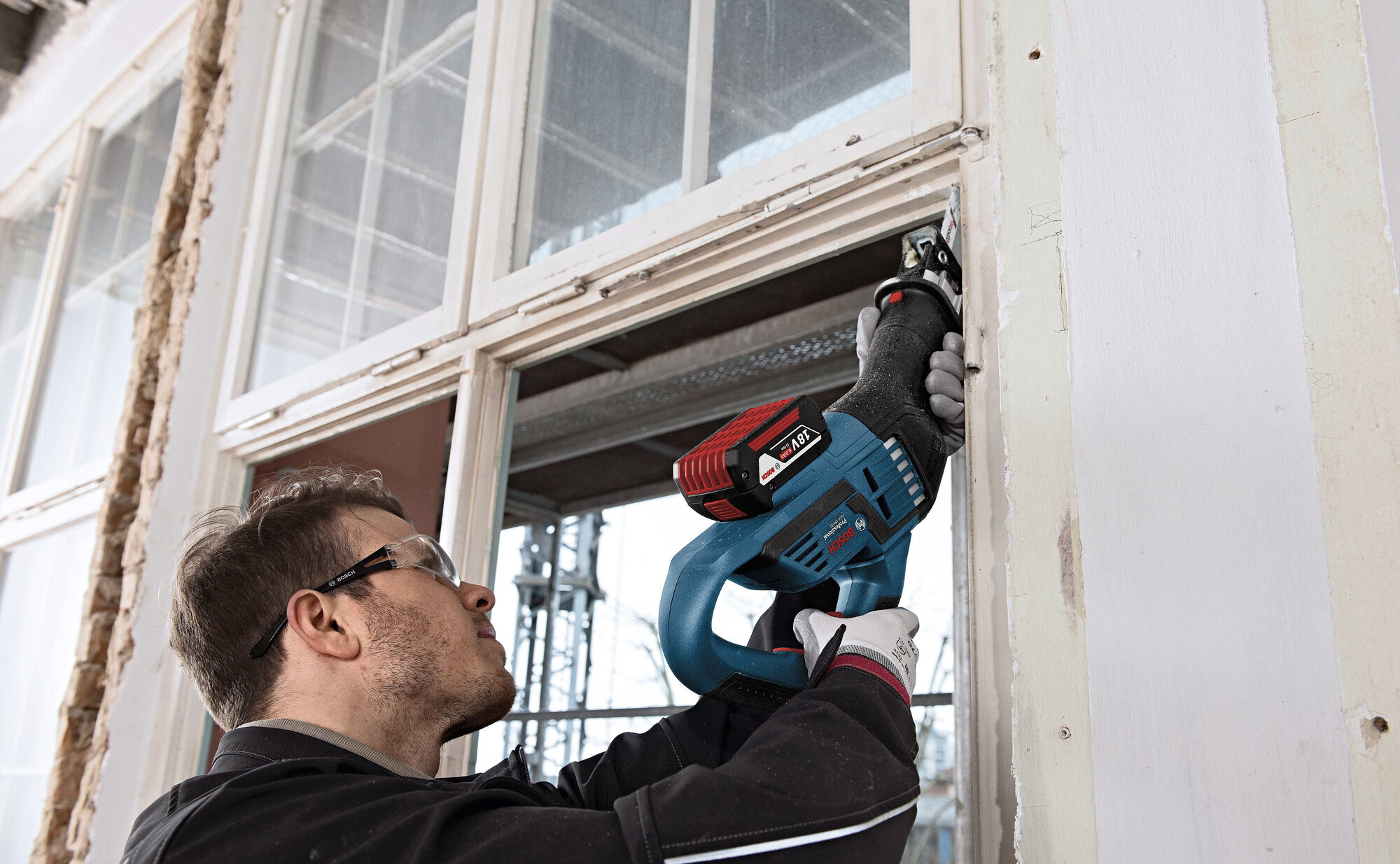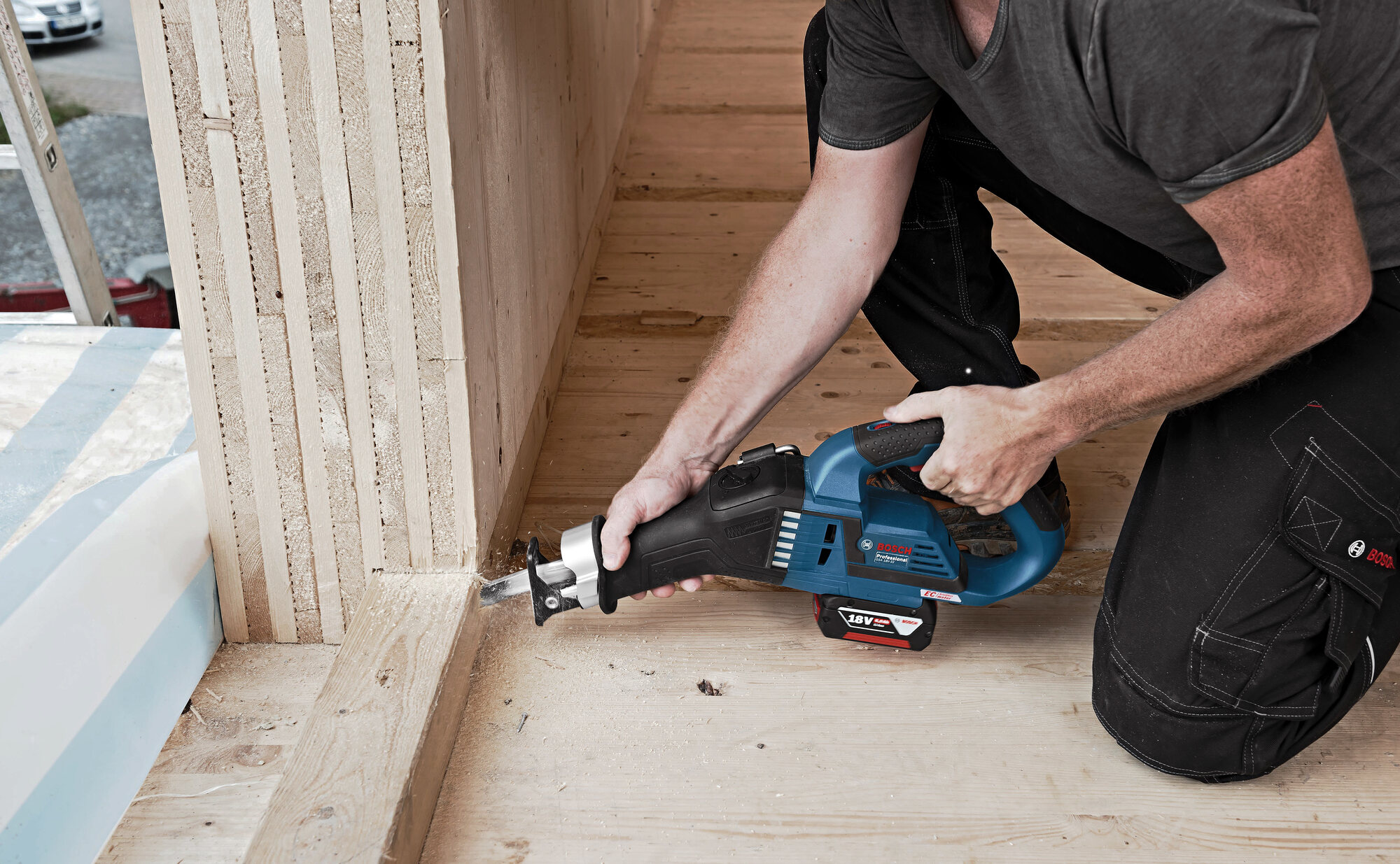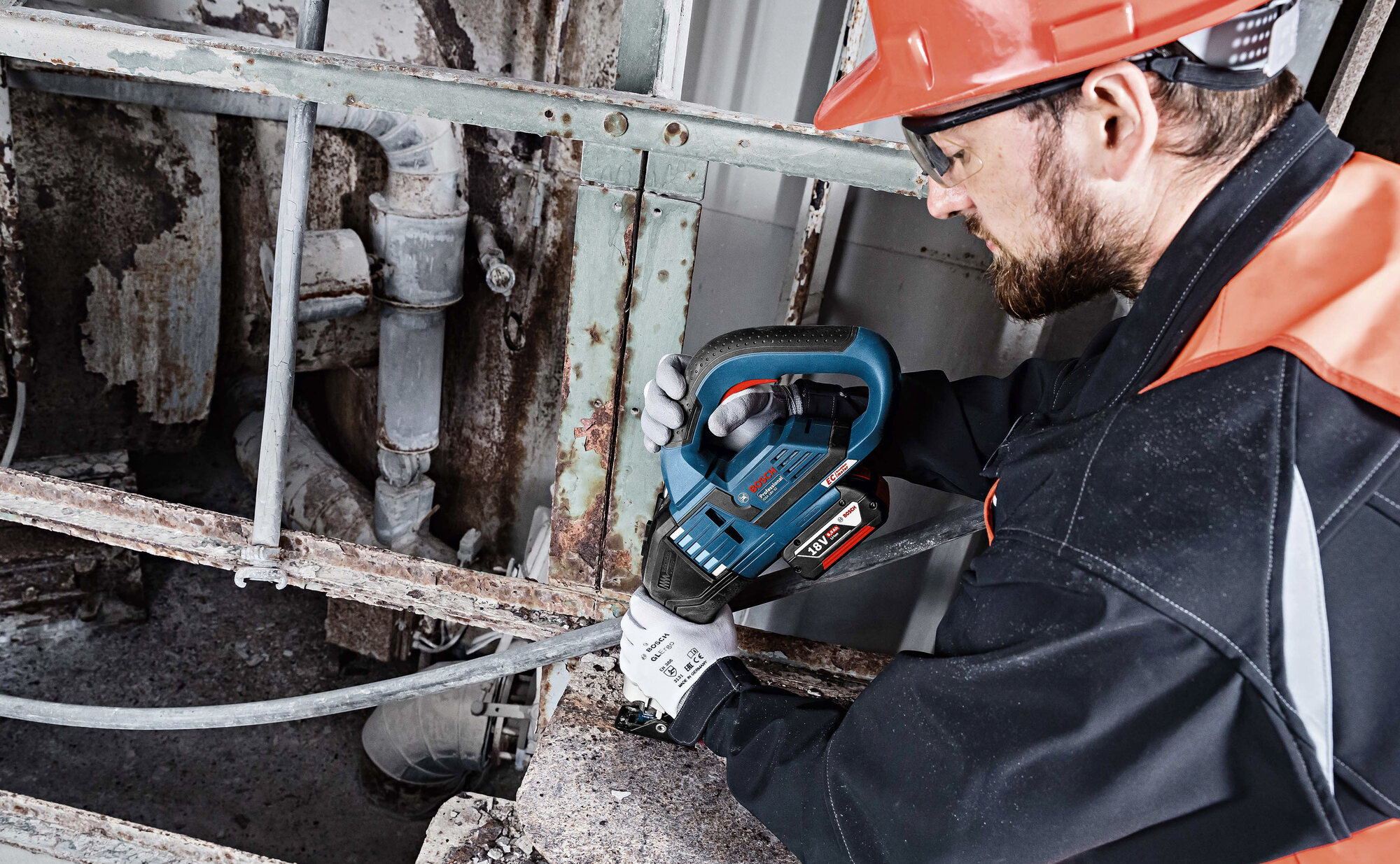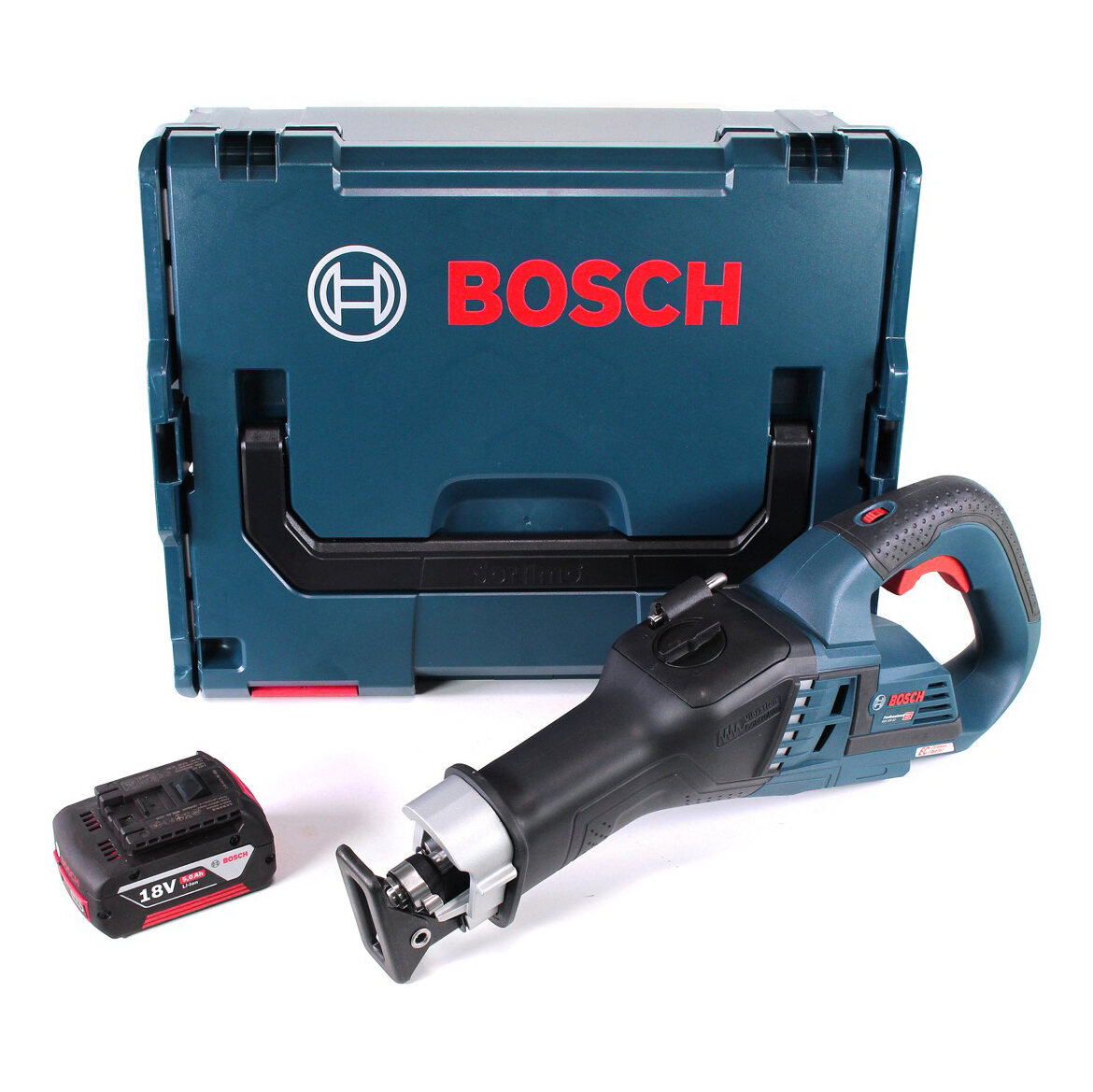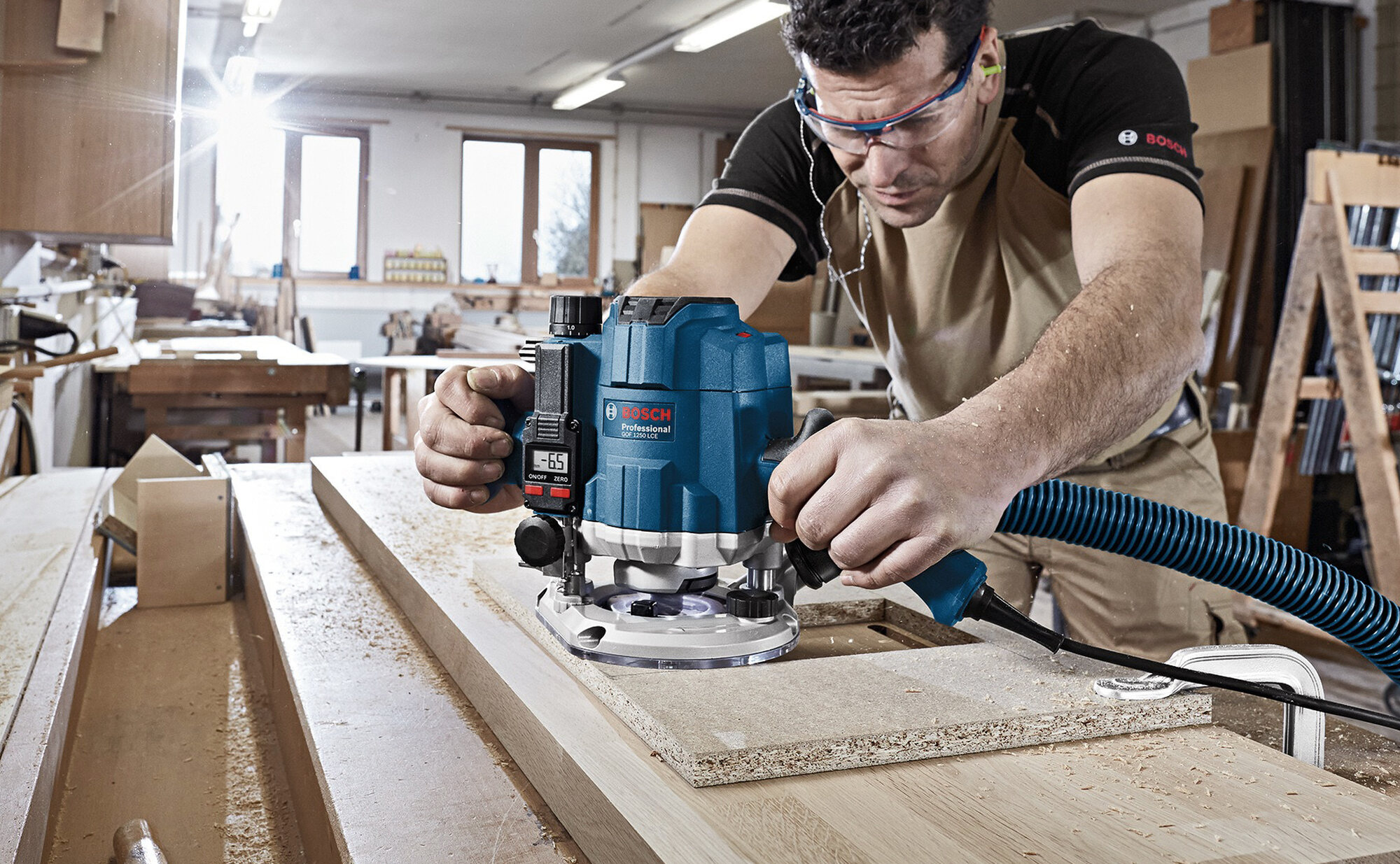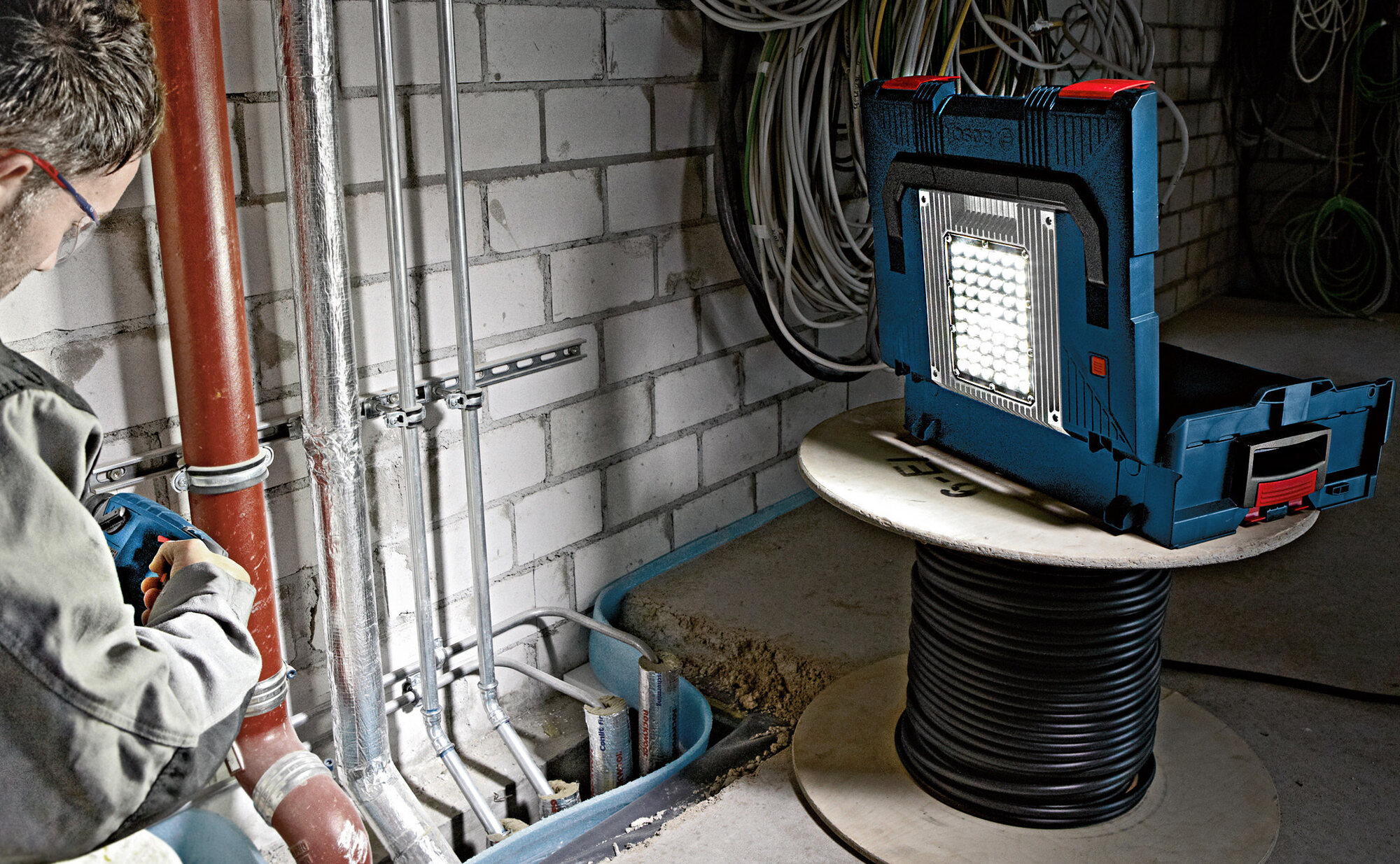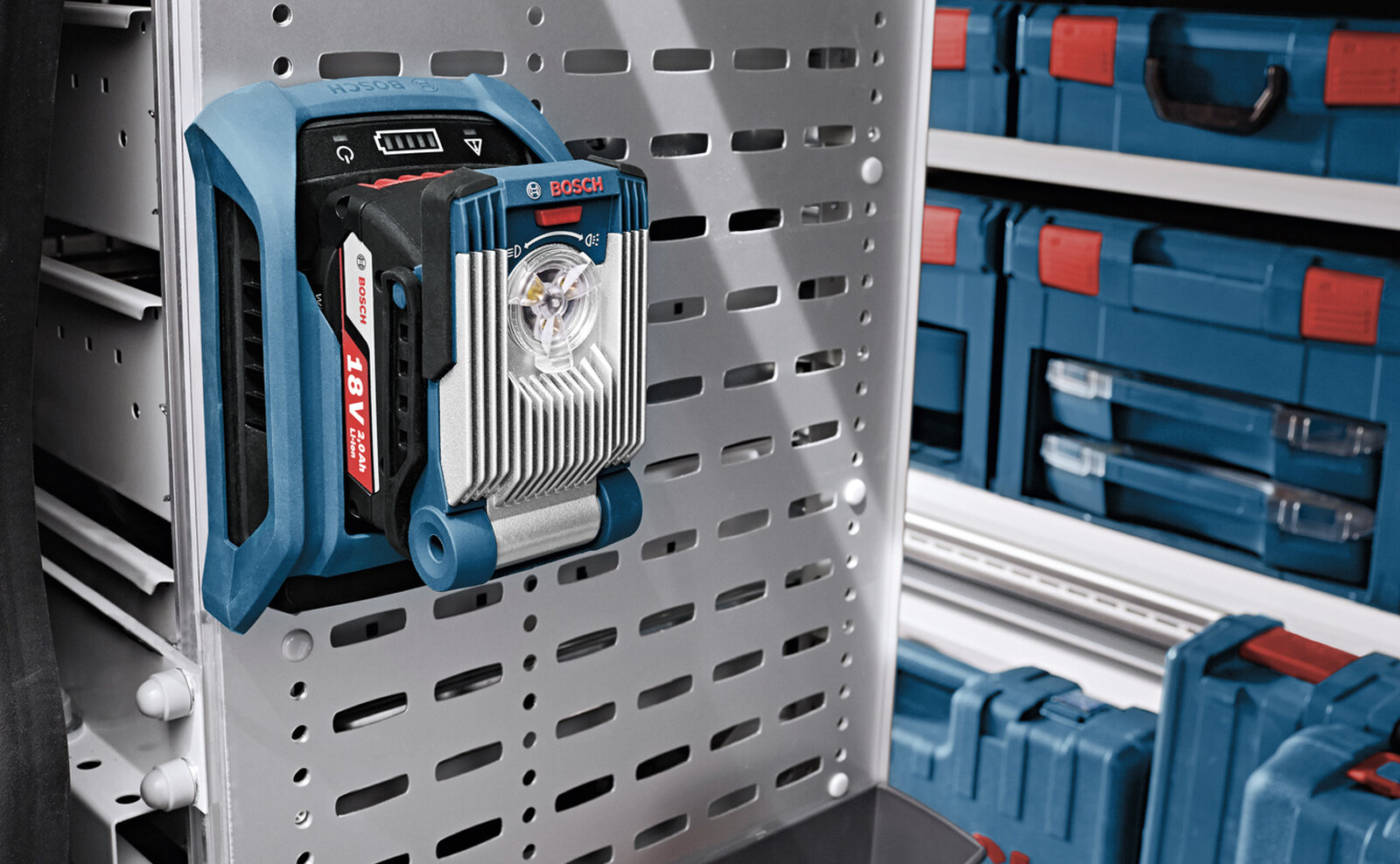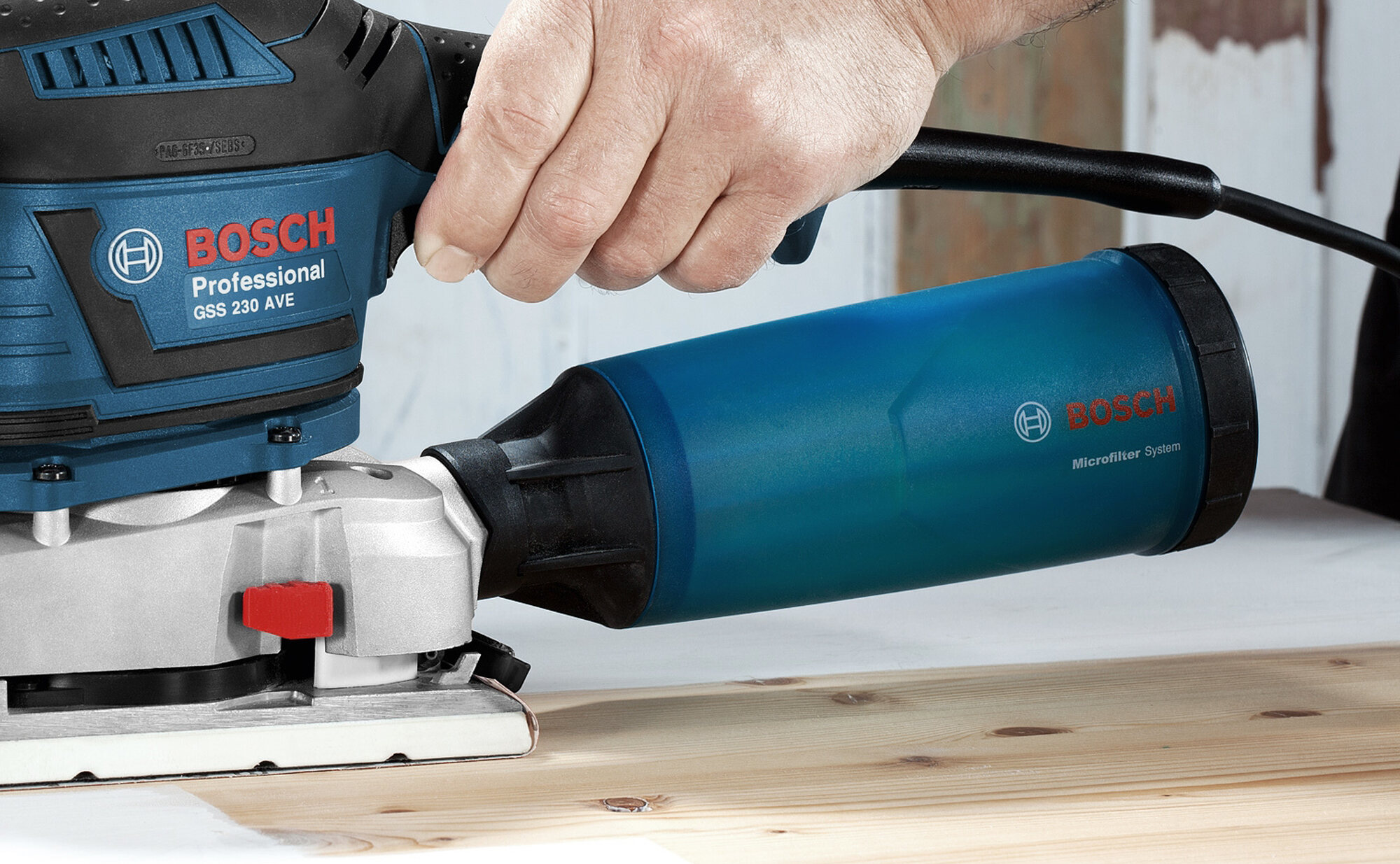Case: Bosch sabre saw
Breaking things down intuitively
It might not be immediately apparent to anyone visiting Tribecraft’s offices in Zurich Binz, but the staff don’t spend all day just sitting at their desks. In addition to cutting-edge meeting rooms and an inviting lounge area, their premises feature a large white cube that contains the workshop, and not a day goes by without a little bit of swarf ending up on the worn floor somewhere along the line. All of the firm’s developers are trained to operate the workshop machinery, and in some cases, their professional careers began with an apprenticeship to a trade. “We enhance our design and technology skills by getting hands-on with the real world,” says Arno Lenzi, one of Tribecraft’s designers. “This unlocks hidden potential and helps us re-think products — using our physical intuition, as it were.” This has also increased the Zurich innovation lab’s appeal to a wide spectrum of clients, with current projects including everything from dreaming up new product categories to improving the user-friendliness of existing products.

So when Lenzi and his colleagues are commissioned by power tools manufacturer Bosch to make over their reciprocating saw, the first day of work on the project involves neither creative brainstorming nor stacks of sketches — instead, they turn to the people who know the saw best: the tradespeople, pallet makers and firefighters who work with it day in, day out.
Getting a sense for the way professionals, with all their tricks and quirks, go about their work, is a crucial part of creating a new design concept, as Lenzi says: “A couple of minutes watching users at work tells us so much more than endless questionnaires.”
The Bosch case is no exception — once on site, the Tribecraft team soon notices that the saw is frequently deployed in places that are hard to reach or require improvised working stances. Back in their workshop, the developers begin testing saws from various manufacturers to accomplish similar tasks — not just on the workbench, but up ladders and on the ground as well. Their suspicions are confirmed: you often have to rotate the tool about its own axis or hold it sideways in order to saw efficiently.

And yet reciprocating saws are typically configured for use standing at a standard workbench — there are barely any grip positions for free use within a workspace; users have to contort themselves into uncomfortable postures, they get tired more quickly, precision is impaired and efficiency suffers.
These ergonomic considerations form the basis for the makeover. The team decides that the saw needs to be shortened (without compromising its weight distribution), the positioning and size of the grips must be redesigned and the sight lines improved.

“We come up with the ideas for such an approach through using the tool, but the suggestions have to be corroborated through hands-on use as well,” notes Lenzi. To this end, the developers take existing reciprocating saw models to pieces, rearrange various parts, add some new elements and then stick and screw the whole thing back together as a functioning experimental prototype. While conducting the tests, they try out different configurations and make further improvements directly to the model.
The new saw proposed by Tribecraft sits more easily in the hand, offers a range of grip positions and is also easier to manage during secondary operations like changing blades. Instead of getting tradespeople hung up on some theoretical ideal, the tool helps users work intuitively. As Lenzi explains: “We want our design concepts to help users focus all their energy and concentration on the job; they shouldn’t be distracted by the shortcomings of a given product.”
Lenzi and his colleagues submit their design concept as a “product vision” (including proposals for features and layout, ergonomic specifications and the experimental prototype) to Bosch’s research and development division, which refines the approaches suggested by Tribecraft and works up the requisite technology. Technical improvements to enhance cutting performance and reduce vibrations are also incorporated, resulting in a mass-produced product that addresses user needs across the board. This focus on professional users pays off, with online review sites praising the new saw for its ingenious layout and improved user-friendliness. As one reviewer writes: “Whether you’re cutting overhead, on the floor, or moving down a wall, it’s easy to adjust your grip to maintain better ergonomics and reduce fatigue. (...) The saw is nearly flawless in its design.”
